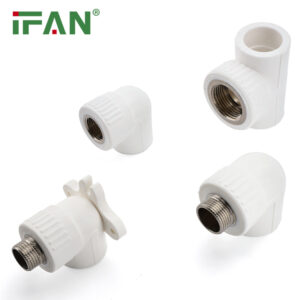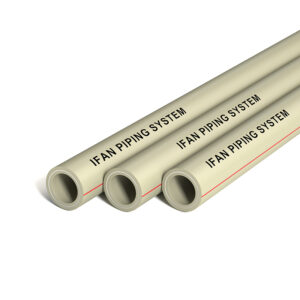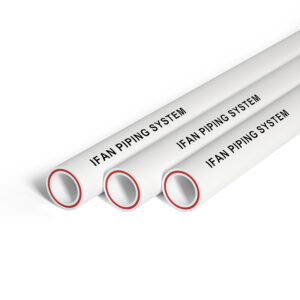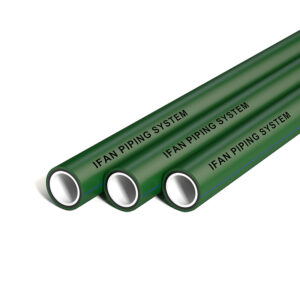
ASTM F2389 Exploring the Cost-Effectiveness of PPR Pipes in Plumbing Projects
Whatsapp Us
Share
Description
IFAN factory 30+ years manufacture experience support color /size customization support free sample.Welcome to consult for catalog and free samples.This is our Facebook Website:www.facebook.com,Click to watch IFAN’s product video.Compared with Tomex products, our IFAN products from quality to price are your best choice, welcome to buy!
In the modern world of plumbing, efficiency and cost-effectiveness are top priorities. One of the best ways to achieve both is by using PPR pipes (Polypropylene Random Copolymer pipes) in your plumbing system. PPR pipes have become a popular choice for residential and commercial plumbing projects due to their durability, low installation costs, and long-term cost savings. In this article, we will explore how PPR pipes contribute to cost-effective plumbing systems and why they are a smart choice for your next project.
What Are PPR Pipes?
PPR pipes are a type of thermoplastic pipe made from polypropylene, which is known for its strength, flexibility, and resistance to high temperatures. These pipes are commonly used for both hot and cold water supply lines, as well as heating systems. PPR pipes are resistant to corrosion, which is a major advantage over traditional metal pipes like copper and steel. They also have a longer lifespan, typically lasting over 50 years, which makes them an ideal choice for both residential and commercial plumbing systems.
The Advantages of Using PPR Pipes in Plumbing Projects
1. Durability and Longevity
One of the primary reasons why PPR pipes are considered cost-effective is their remarkable durability. Unlike traditional metal pipes, PPR pipes do not corrode, rust, or suffer from scale build-up. This makes them ideal for hot and cold water systems, where pipe failure due to corrosion can lead to expensive repairs and replacements. The long lifespan of PPR pipes, which can exceed 50 years with proper maintenance, reduces the need for frequent replacements, making them a smart investment in the long run.
2. Low Installation Costs
Compared to copper or steel pipes, the installation cost of PPR pipes is significantly lower. PPR pipes are lightweight, easy to handle, and can be connected using a simple heat fusion process, eliminating the need for expensive welding or specialized tools. This easy installation process also reduces labor costs, which can be a significant portion of plumbing expenses.
Since PPR pipes do not require any complicated fittings or welding, the overall installation time is shorter, which further reduces costs. Additionally, PPR pipes are less likely to cause leaks during installation, meaning fewer mistakes or rework for the plumber, which again saves on labor and materials.
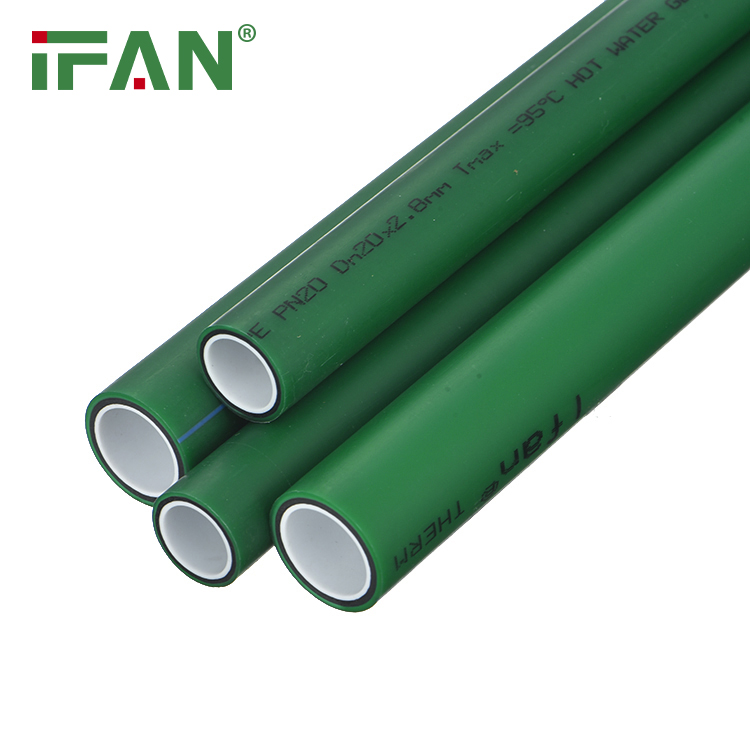
3. Energy Efficiency
PPR pipes are excellent insulators, helping to maintain the temperature of water as it travels through the system. Whether you are using hot or cold water, PPR pipes minimize heat loss or gain, making them energy-efficient. This reduces the need for additional energy to heat or cool the water, leading to lower energy bills. Over time, this energy efficiency can contribute significantly to cost savings, especially in large commercial or residential buildings with high water demand.
4. Lower Maintenance Costs
The resistance of PPR pipes to corrosion and damage significantly lowers maintenance costs over the years. Traditional metal pipes like copper are prone to rusting and developing leaks, which requires regular inspections and repairs. **PPR pipes**, on the other hand, require minimal maintenance. Their resistance to scaling, rust, and corrosion means they do not need to be replaced or repaired as often, thus reducing the overall maintenance costs for plumbing systems.
Additionally, PPR fittings are designed to form secure, leak-free connections, reducing the likelihood of leaks or system failures that can lead to costly repairs and water damage.
5. Recyclability and Environmental Impact
Another important benefit of PPR pipes is their environmental impact. PPR pipes are made from recyclable polypropylene material, which helps to reduce waste and contributes to more sustainable plumbing systems. Since PPR pipes last for decades, the need for replacements and the associated waste is minimized. Choosing PPR pipes is a step towards a greener future by reducing the overall environmental footprint of your plumbing system.
How to Choose the Right PPR Pipe for Your Project
When selecting PPR pipes for your plumbing project, it’s important to choose the right type based on your specific needs. Here are some factors to consider:
1. Pipe Size and Diameter: Ensure that the PPR pipes you choose are the right size for your system. Pipes that are too small may cause pressure drops, while pipes that are too large could increase material costs unnecessarily.
2. Pressure Ratings: Make sure that the PPR pipes are rated for the appropriate pressure for your system. Higher-pressure applications, like those used in heating systems, may require pipes with higher pressure ratings.
3. Temperature Resistance: PPR pipes are ideal for both hot and cold water applications, but it’s essential to ensure that the pipes you choose are rated for the specific temperature range of your project.
4. Quality: Not all PPR pipes are created equal. It’s important to buy high-quality pipes and fittings from reputable suppliers to ensure that the materials meet the required standards for durability and performance.
Conclusion
PPR pipes offer exceptional value in plumbing systems due to their durability, low installation and maintenance costs, energy efficiency, and long lifespan. While the initial cost may be slightly higher than some traditional materials, the long-term savings make PPR pipes a more cost-effective solution for plumbing projects. Whether you’re installing a new system or upgrading an existing one, choosing PPR pipes can save you time, money, and energy over the years. Their ability to resist corrosion, scale build-up, and leaks makes them a wise investment for anyone looking to create a reliable and low-maintenance plumbing system.
Frequently Asked Questions (FAQ)
1. What are the benefits of using PPR pipes over metal pipes?
PPR pipes are resistant to corrosion and rust, require less maintenance, and have a longer lifespan compared to metal pipes like copper or steel. They also offer better insulation properties, improving energy efficiency.
2. How are PPR pipes installed?
PPR pipes are installed using a heat fusion process, where the pipe and fittings are heated and then fused together, creating a leak-free and secure connection.
3. Can PPR pipes be used for hot water systems?
Yes, PPR pipes are designed to handle both hot and cold water systems, with excellent resistance to high temperatures, making them ideal for hot water distribution.
4. How long do PPR pipes last?
PPR pipes are known for their durability and can last for over 50 years, making them a reliable long-term solution for plumbing systems.
5. Are PPR pipes environmentally friendly?
Yes, PPR pipes are made from recyclable materials, and their long lifespan reduces the need for frequent replacements, contributing to a more sustainable plumbing system.


